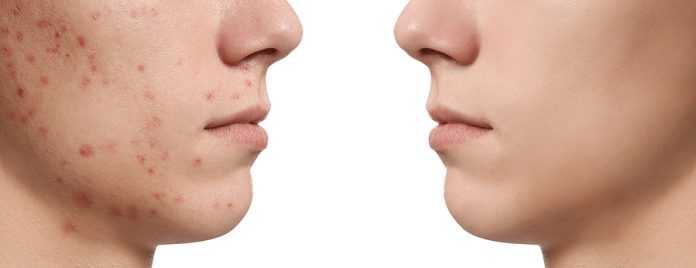Soon, a treatment for molluscum contagiosum may be the first to be approved by the Food and Drug Administration, changing the landscape of dermatology treatment for the skin condition characterised by skin lesions. Another treatment for acne may also be underway.
Leon H. Kircik, MD of the Icahn School of Medicine presented the positive effects of two emerging dermatological treatments, one for molluscum contagiosum and one for acne, at the Orlando Dermatology Aesthetic and Clinical Conference.
Verrica Pharmaceuticals’ treatment for molluscum has been tested in phase 3 studies and is currently under review with the Food and Drug Administration. It consists of a drug-device which combines the medication cantharidin 0.7% with a single-use applicator delivery system. The applicator system ensures targeted delivery via a precision tip. Verrica Pharmaceuticals, the manufacturer of cantharidin 0.7%, resubmitted a drug application for this product in December of 2020.
Kircik, who is a clinical professor of dermatology as well as medical director of Physicians Skin Care in Louisville, Kentucky, lauded the product, VP-102, which has the potential to be the first FDA-approved treatment for molluscum in existence. He described the functionality of the treatment at the conference, noting both the visualization agent present in the treatment and the bittering agent that prevents oral ingestion by children. 46% to 54% of patients who received the cantharidin 0.7% treatment experienced complete clearance at 12 weeks, while the lesion count was reduced from 69% to 82% when compared with the baseline.
As well, Kircik addressed a potential “game changer” in the treatment of acne in patients aged 12 years and older: clascoterone 1% cream. The cream shows powerful anti-androgen activity in the skin rather than systemically. Clascoterone targets the androgen receptors in the skin only, and the treatment shows both anti-inflammatory and anti-sebum effects thanks to the limitation of the transcription of androgen receptive genes. The treatment is also being explored as a possible approach to androgenetic alopecia.
Two phase 3 trials of the clascoterone 1% cream revealed a positive response on the IGA scale, clear or almost clear, for 18.4% of patients at week 12 of the treatment compared to 9% of patients on vehicle in one study (P less than .001). In the second study (P less than .001), 20.3% compared to 6.5.%, respectively.
In addition to clascoterone, Kircik noted that other treatments for acne, like retinoids and the hydrophobic 4% minocycline, have been shown to be clinically effective for patients with moderate to severe acne.
Kircik explained that retinoids have anti-comedogenic and anti-inflammatory effects which combine to limit toll-like receptor activity. Retinoids interfere with the AP-1 pathway, minimising inflammation signalling that is linked with scarring as well as changes to and degradation of collagen levels in the skin.
Most recently, in 2019, the topical retinoid treatment for acne, 0.005% trifarotene cream, was approved for patients who are 9 years of age and older. Though the news of the approval promised to be exciting, Kircik found the outcomes of this retinoid underwhelming, observing that only about 3.6 (mean) lesion reduction between the active arm and the vehicle arm was the result. The side effects of the treatment are substantial, discouraging Kircik from using the product in his clinical practice. Side effects include mild to moderate erythema in 59% of patients who underwent the treatment, scaling in 65%, stinging and burning in 56%, and dryness in 69%.
Kircik stated that the trifarotene cream was also tested for the treatment of truncal acne, but when one study compared trifarotene to tazarotene 0.045% lotion, the spread of the tazarotene lotion made it easier to use on areas of the body like the chest and back.
Kircik, a consultant to various pharmaceutical companies, is an advisor to Galderma, the company who manufactures trifarotene cream.
A hydrophobic foam formulation of 4% minocycline was also approved in 2019 by the Food and Drug Administration for the treatment of moderate to severe acne. According to Kircik, patients aged 9 years and older can receive this treatment. One study that took place over 12 weeks observed the reduction of inflammatory lesion count in 1,488 patients with a mean age of approximately 20 years. A 56% reduction in lesions was observed in those patients who were treated with 4% minocycline, compared to 43% in the vehicle group.
Kircik, who was an author of the minocycline study, pointed out that the hydrophobic nature of the treatment enabled effective delivery of minocycline, widely understood as an unstable active pharmaceutical ingredient. The foam-like quality of minocycline 4% enhances the ease of application and absorption, and no surfactants nor short chain alcohols are present in the treatment. Both characteristics make minocycline 4% a tolerable option for patients.


